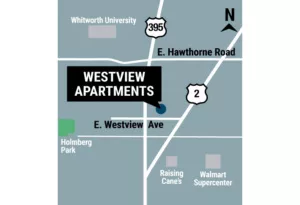
Home » Power of compounding shouldn't be overlooked (finance)
Power of compounding shouldn't be overlooked (finance)
Investing early, over long timeline adds to savings
April 11, 2019
 The purchase of Manhattan Island by Peter Minuit for $24 in 1626 is commonly used as an example of a one-sided trade in favor of the Dutch.
The purchase of Manhattan Island by Peter Minuit for $24 in 1626 is commonly used as an example of a one-sided trade in favor of the Dutch.
However, applying the power of compound interest to this sale suggests that it could have also worked out well for the native inhabitants. This was illustrated by successful investor, Mohnish Pabrai, in a 2017 talk.
He said that if the selling Lenape people had access to an investment office that achieved 7 percent annual returns from 1626 to today, their $24 would be worth about $7.9 trillion (my updated calculations).
It’s hard to gauge the total current value of Manhattan. However, considering that the total household net worth of the entire U.S. is around $100 trillion, $7.9 trillion in your brokerage account would be a nice outcome. Also, earning 7 percent on that $7.9 trillion would yield over $550 billion in 2019 alone.
Of course, there were no facilities available in the U.S. at that time to safely deposit assets and watch them grow. This is an example of the fantastic power of compounding, and other examples abound. Warren Buffett occasionally opined on “The Joys of Compounding” in his early partnership letters.
In the 1962 letter he noted that the estimated $30,000 cost of sending Columbus to the Americas in 1492 would have been worth about $2 trillion at the time (he used a 4 percent investment rate), which would be $18 trillion in 2018. The current total net worth of Spain is $7 trillion, and that doesn’t include any ownership interest in their New World venture.
Most investors don’t have a 500-year time horizon to accumulate trillions of dollars, so what does it mean for you? It means that the power of compounding can still work very well. As you can see from the earlier examples, there are two inputs in compounding—time and rate of return. Assume an annual rate of return of 8 percent, which is a reasonable figure considering that the Standard & Poor’s 500 (the 500 largest public companies in the U.S.) returned over 9 percent from 1928 to 2018. The value of $100,000 in 10 years would be $216,000 (annual compounding). With a 30-year time horizon, that becomes $1,000,000. Depending on your lifestyle, that could be a nice retirement nest egg. Assuming that a 30-year-old has $50,000 to invest, they could still end up with $1,100,000 at age 70 because of the longer time horizon.
Another interesting example showing the benefit of a longer time horizon is as follows: Investing $1,000 per year from age 23 to 30 and then holding until age 60 yields almost double the result compared to investing $1,000 per year from age 40 to 60 ($90,000 outcome versus $46,000). This again assumes annual compounding at 8 percent.
Stated differently, the first investor yielded twice the outcome for less than half the initial input by taking advantage of their longer time horizon.
The importance of optimizing investment returns is clear. Also, considering that financial advisory and investment fund fees can exceed 2 percent per year, monitoring fees can be an opportunity to materially benefit your financial future.
Similarly, paying a 5 percent front-end load (fee) on a mutual fund, that is a $95,000 actual investment after fees, results in $956,000 after 30 years compared to the $1 million we saw earlier. This $44,000 reduction came from $5,000 in upfront fees.
Concluding his Columbus illustration, Buffett said, “Such fanciful geometric progressions illustrate the value of either living a long time or compounding your money at a decent rate.” Therefore, ensure you are getting a decent rate on your investments (after fees), and get your money working for you and your loved ones as early as possible.
Christopher G. Malde, a chartered financial analyst, is the managing member of Spokane-based Malde Capital Management LLC. He can be reached at 509.789.0899.
Latest News Banking & Finance
Related Articles
Related Products


